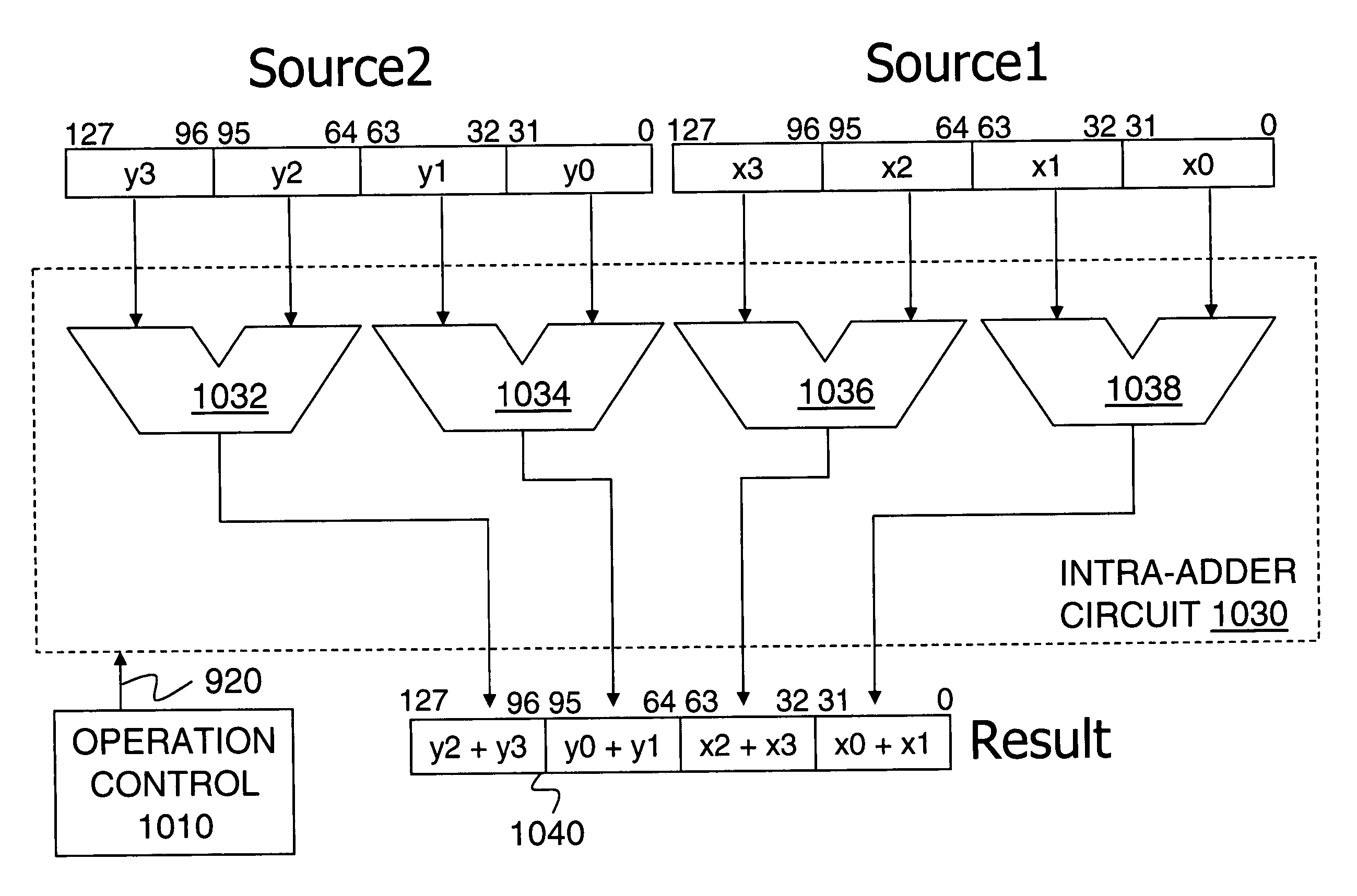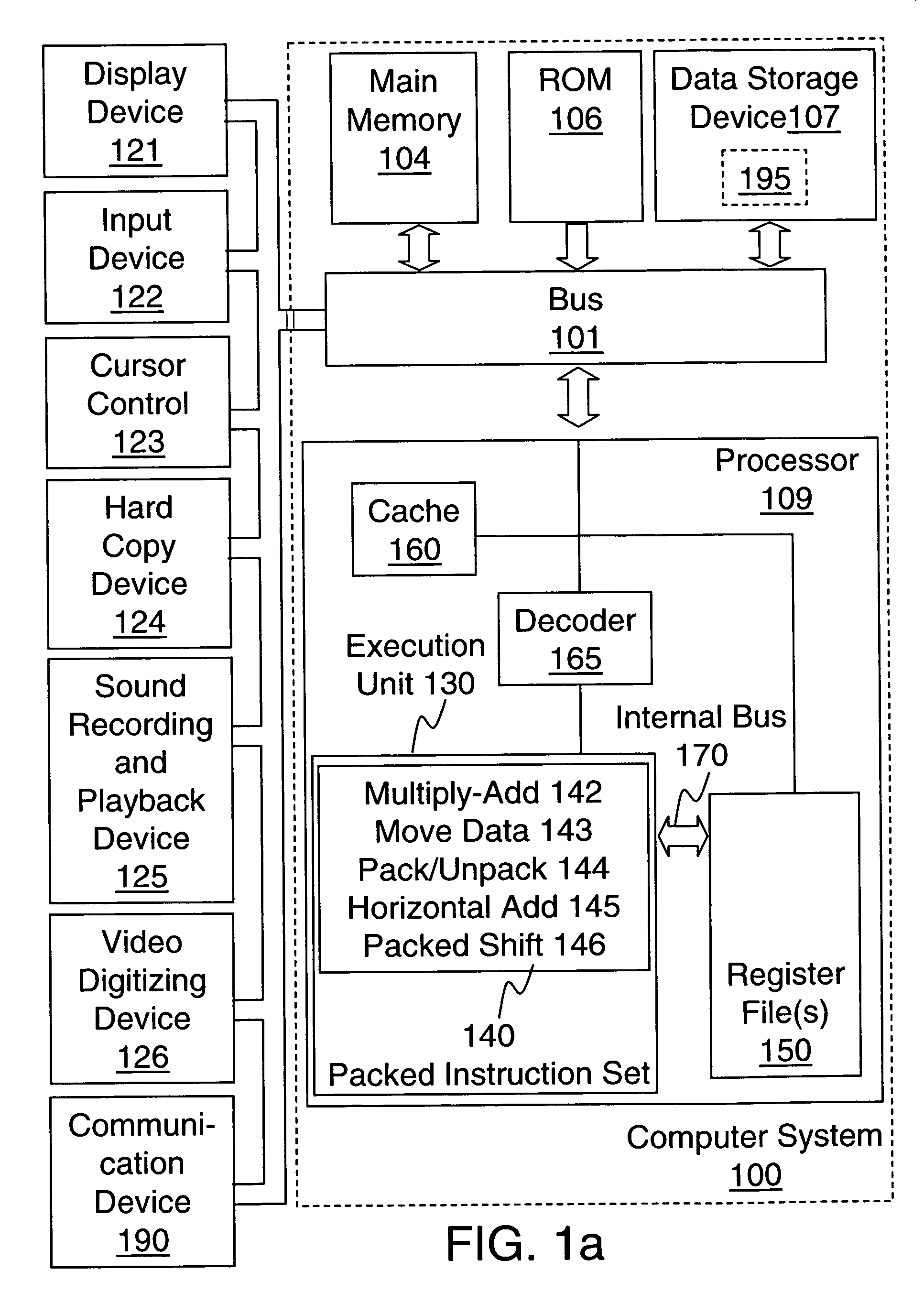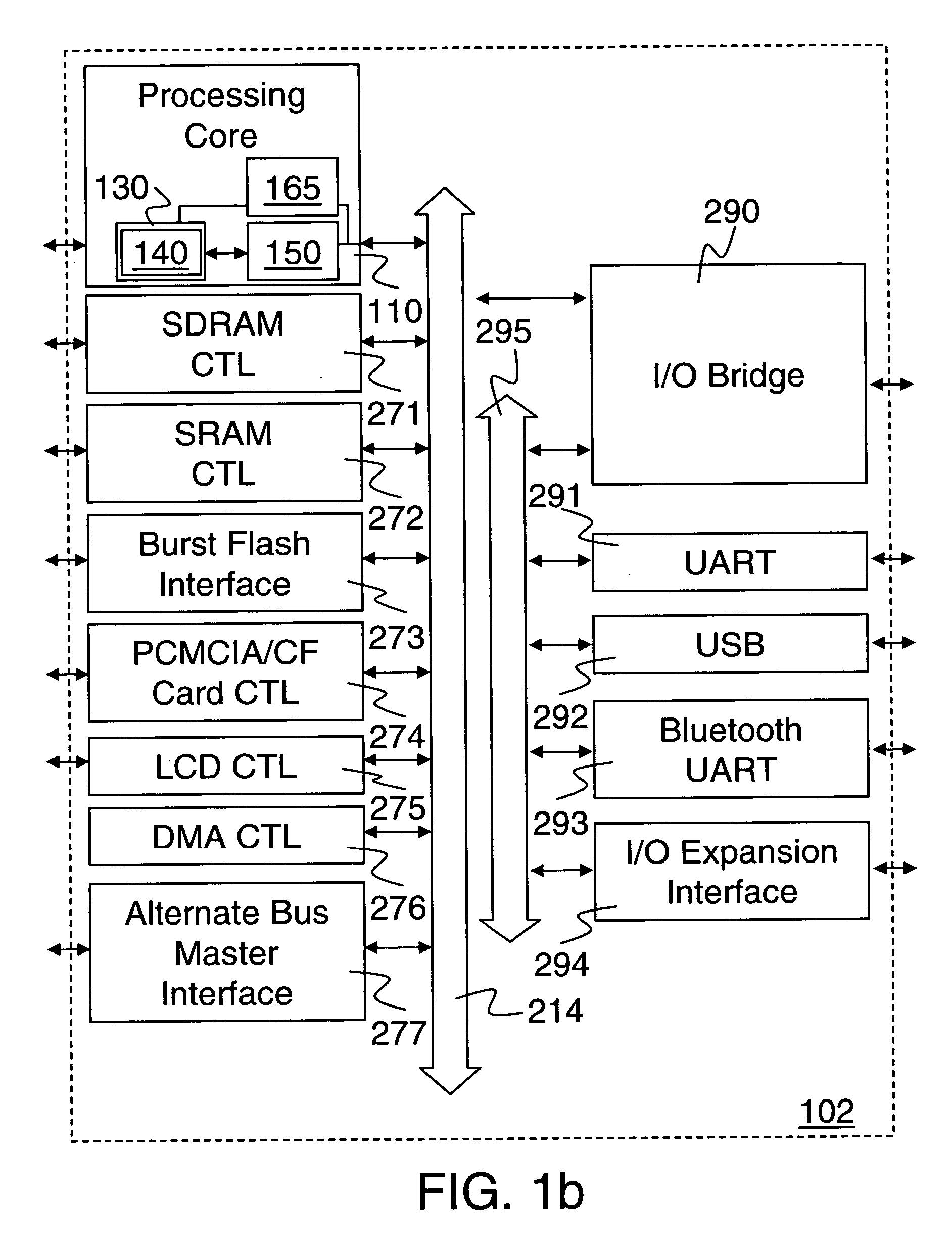Method and apparatus for efficient integer transform
a technology of integer transformation and method, applied in the field of transformation coding techniques for compression and decompression, can solve the problems of inverse transform mismatch, insufficient comprehensiveness, and inability to target the general needs of transforms of current methods and instructions
- Summary
- Abstract
- Description
- Claims
- Application Information
AI Technical Summary
Problems solved by technology
Method used
Image
Examples
Embodiment Construction
[0025]A method and apparatus for efficient integer transforms of content data are described. The method includes generating, in response to executing a multiply-add instruction, a plurality of sums of product pairs within a destination data storage device. The plurality of product pairs are formed by multiplying data within the destination data storage device and coefficients within a co-efficient data storage device. In response to executing a second multiply-add instruction, a second plurality of sums of product pairs may be generated within another destination data storage device. Once generated, adjacent summed-product pairs may be added in response to executing a horizontal-add instruction. The adjacent summed-product pairs are added and results are stored within the destination data storage device. Once formed, the results may also be stored within a memory device.
[0026]Further disclosed herein is a method and apparatus for including in a processor, instructions for performing...
PUM
 Login to View More
Login to View More Abstract
Description
Claims
Application Information
 Login to View More
Login to View More - R&D
- Intellectual Property
- Life Sciences
- Materials
- Tech Scout
- Unparalleled Data Quality
- Higher Quality Content
- 60% Fewer Hallucinations
Browse by: Latest US Patents, China's latest patents, Technical Efficacy Thesaurus, Application Domain, Technology Topic, Popular Technical Reports.
© 2025 PatSnap. All rights reserved.Legal|Privacy policy|Modern Slavery Act Transparency Statement|Sitemap|About US| Contact US: help@patsnap.com



